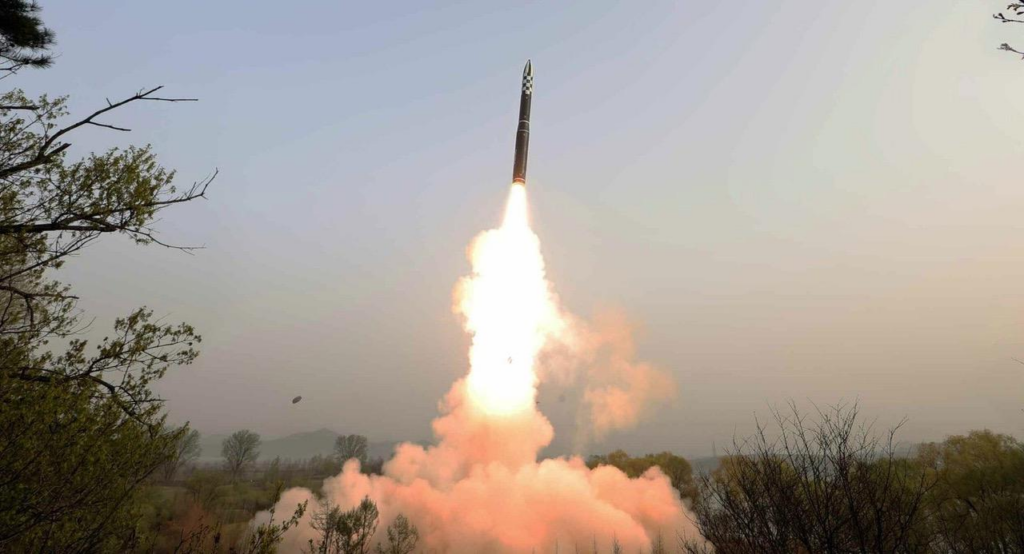
Facts
| North Korean/U.S. Designation | Hwasong-18 |
| Missile Variants | None |
| Mobility and Role | Road-mobile ICBM |
| Designer/Producer | North Korea |
| Range | Unknown |
| Warhead Type and Weight | Coventional or Nuclear / 40-50 tons |
| MIRV and Yield | Possible MIRV capability / Unknown |
| Guidance System/Accuracy | Unknown / Unknown |
| Stages/Propellant | Three / Solid |
| IOC | 2023 |
| Status/Number of Units | Most likely still undergoing testing |
Development
The Hwasong-18 was first spotted in February 2023, at a parade celebrating the 75th anniversary of the Korean People’s Army, where four nine-axle road-mobile launchers carrying the ICBM were present. The TV announcer referred them as “Hwasong-class missiles.”
On April 13, 2023, the Hwasong-18 was tested. It was the first North Korean flight test of a solid-propellant ICBM. The unusual flight profile of the test caused Japan to issue an alarm on the island of Hokkaido. However, it landed in the Sea of Japan outside the country’s EEZ, having traveled 620 miles. A DPRK announcement on April 14 stated that the Hwasong-18 would be “the future core pivotal means of the strategic force of the DPRK” and “the most powerful, pivotal and principal means in defending the DPRK.”
Strategic Implications
The Hwasong-18 is the DPRK’s first mobile solid-fuel ICBM. This considerably strengthens North Korea’s second-strike capability, as solid fuel-equipped missiles do not need to be fueled right before launch and require less support vehicles, making them easier to conceal. Additionally, solid missiles are more reliable. The Hwasong-18 is a significant step in the DPRK’s ICBM program, and will most likely be the country’s primary ICBM for the time being.
